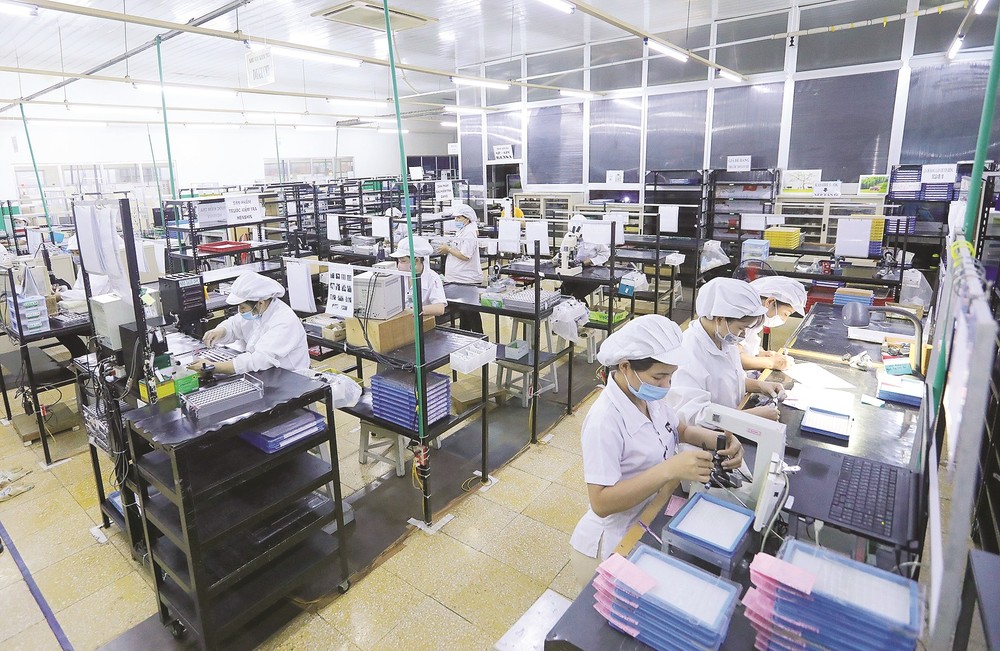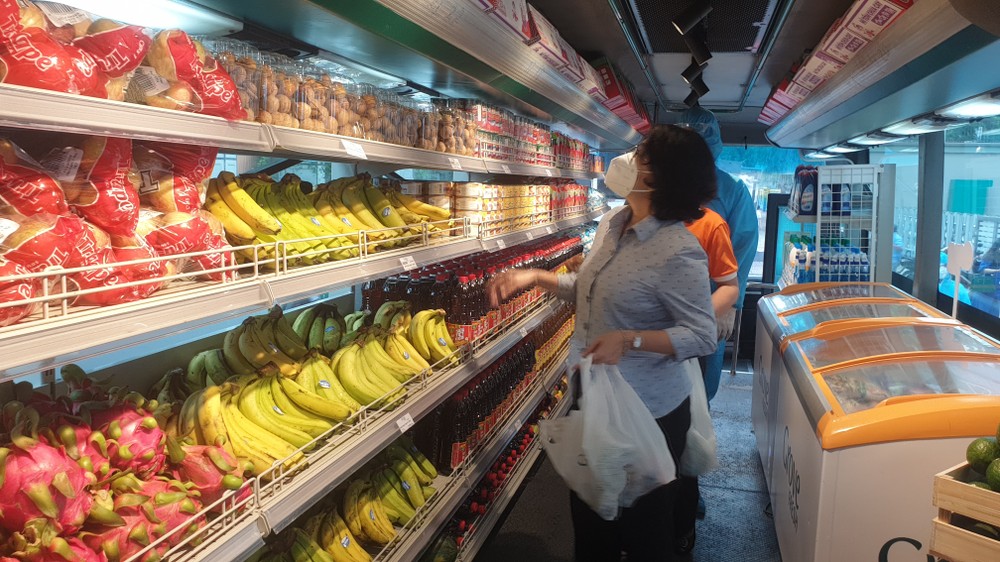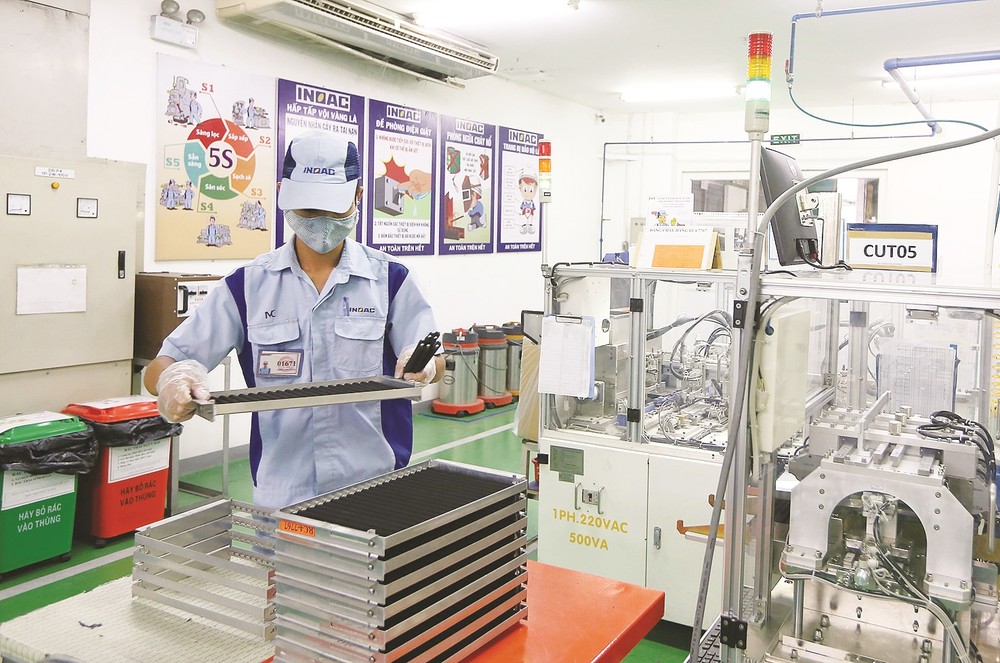 Illustrative image. (Photo: SGGP)
Illustrative image. (Photo: SGGP)
It is the result of the synchronous management of macroeconomic policies. However, it also comes from some reasons. For instance, the domestic demand remained weak; monetary factors had a moderate growth rate; support solutions have not shown efficiency when the actual capacity is still low compared to the economy's scale.
However, some signs of price hikes have also appeared. The global fuel and basic commodity prices are in an upward trend, causing CPI in November to increase by 0.32 percent compared to the previous month - the month with the second-highest increase since the beginning of 2021, just behind July, the peak month of social distancing - and up 2.1 percent over the same period in 2020. In general, domestic inflation so far has increased lower than that of the world and absolutely within the goals of the National Assembly and the Government. It is the result of the synchronous management of macroeconomic policies. However, it also comes from some reasons. For instance, the domestic demand remained weak; monetary factors had a moderate growth rate; support solutions have not shown efficiency when the actual capacity is still low compared to the economy's scale. In that context, many people said that inflation in developed countries would cool down quickly and return to near the target level of central banks in the medium and long term.
On the contrary, although, according to the forecast of the International Monetary Fund (IMF), Vietnam's inflation in 2022 will be at 2.3 percent, many domestic economists estimated that it would be higher.
Noticeably, commodity prices in the world have declined, but the decrease is insignificant, with most of them equivalent to the price levels in 2021. Meanwhile, due to the impact of the Covid-19 pandemic, domestic production of goods had seen significant disruptions, so the price increases of global goods used as input materials for domestic production have not been fully reflected in market prices. In 2022, when the economy operates at a higher capacity, the increase in raw material prices will be able to be fully reflected in product prices and thereby increase domestic inflation. Food prices, accounting for about 17 percent of the weight in the CPI basket, have some potential risk of escalating. The psychology of revenge shopping may not take place massively because people's pockets have been seriously affected by the pandemic, and financial defensiveness has inflated after many consecutive outbreaks of Covid-19. However, the rebound in demand for goods and, especially, services, such as tourism, leisure travel, and entertainment, will jump sharply when the economy operates normally, which will also create inflation pressure.
Besides, depending on the structure of the economic stimulus package, the impact on inflation will vary. If the focus is on boosting demand through direct support packages for the people or promoting government spending through public investment, the inflation pressure will also be relatively tremendous.
On the contrary, although, according to the forecast of the International Monetary Fund (IMF), Vietnam's inflation in 2022 will be at 2.3 percent, many domestic economists estimated that it would be higher.
Noticeably, commodity prices in the world have declined, but the decrease is insignificant, with most of them equivalent to the price levels in 2021. Meanwhile, due to the impact of the Covid-19 pandemic, domestic production of goods had seen significant disruptions, so the price increases of global goods used as input materials for domestic production have not been fully reflected in market prices. In 2022, when the economy operates at a higher capacity, the increase in raw material prices will be able to be fully reflected in product prices and thereby increase domestic inflation. Food prices, accounting for about 17 percent of the weight in the CPI basket, have some potential risk of escalating. The psychology of revenge shopping may not take place massively because people's pockets have been seriously affected by the pandemic, and financial defensiveness has inflated after many consecutive outbreaks of Covid-19. However, the rebound in demand for goods and, especially, services, such as tourism, leisure travel, and entertainment, will jump sharply when the economy operates normally, which will also create inflation pressure.
Besides, depending on the structure of the economic stimulus package, the impact on inflation will vary. If the focus is on boosting demand through direct support packages for the people or promoting government spending through public investment, the inflation pressure will also be relatively tremendous.
 Illustrative image. (Photo: SGGP)
Illustrative image. (Photo: SGGP)
The pressure is there, but obviously, 2022 will be an important year for implementing economic recovery strategies. If too much focus is placed on tightening macroeconomic policies to control inflation, the economic recovery process will face difficulties or even cause stagnation: inflation remains high while economic growth declines. To control inflation at the target level of about 4 percent in 2022, it is necessary to balance between stimulating demand and improving domestic production capacity through preferential mechanisms and policies for manufacturing industries heavily affected by the Covid-19 pandemic and industries with large spillover capability in the economy. Some people worried that increasing the State budget deficit through promoting public investment spending would fuel inflation. However, the State Budget Law does not allow the Government to cover the budget deficit by issuing money, so this possibility is unlikely to happen. If making up the budget deficit by domestic borrowing, the total money supply in the economy will not change (money only moves from the private sector to the public sector) and will not create inflationary pressures.Carefully considering power price In that context, fiscal policy needs to ensure that the budget deficit can be compensated by domestic borrowing to avoid inflationary pressure and ensure an essential source of support for the economy during the recovery period. One of the feasible solutions is to decentralize and assign tasks to localities with many laborers to implement housing programs for workers in the direction in which localities allocate clean land, and the Government provides funding from Government bonds to build boarding houses for workers to rent according to their income. The property belonged to the State is assigned to the locality to establish a public-utility enterprise to manage and maintain the construction and conduct it following current laws.
 Illustrative image. (Photo: SGGP)
Illustrative image. (Photo: SGGP)
Another important requirement is to closely monitor developments in the global financial markets, especially the monetary tightening policies by major economies, to have an appropriate monetary policy. It is essential to have the policy to control overheated growth in the real estate and stock markets. The rapid appreciation of asset markets has caused inflationary pressures and inflation expectations, causing difficulties for macroeconomic stability. In the event of bubbles in the asset market, the consequences brought to an economy that struggles due to the Covid-19 pandemic are extremely devastating. Especially, it is impossible not to mention an important tool in price management: developing a plan to adjust the prices of goods managed by the State following an appropriate roadmap. Currently, the prices of goods controlled by the State account for about 14 percent of the commodity basket, including power, medical services, and educational services. Power price needs to be considered carefully. The electricity price has not increased for nearly three years since March 2019, and amid the context that input materials for energy production, such as coal, LNG, or natural gas, all tended to climb strongly in 2021 and was forecasted to establish a new price level higher than before the Covid-19 pandemic. If power price is adjusted in 2022, it will cause relatively significant inflationary pressures because electricity demand is expected to rise when production activities recover in 2022. Therefore, it is essential to have a reasonable and public power price increase roadmap for consumers to make plans to balance production and promote investment in equipment with new technology and low energy consumption. It is also a form of promoting investment from all economic sectors to fulfill the Prime Minister's commitment at the 26th session of the Conference of the Parties of the UN Framework Convention on Climate Change (COP26).
























